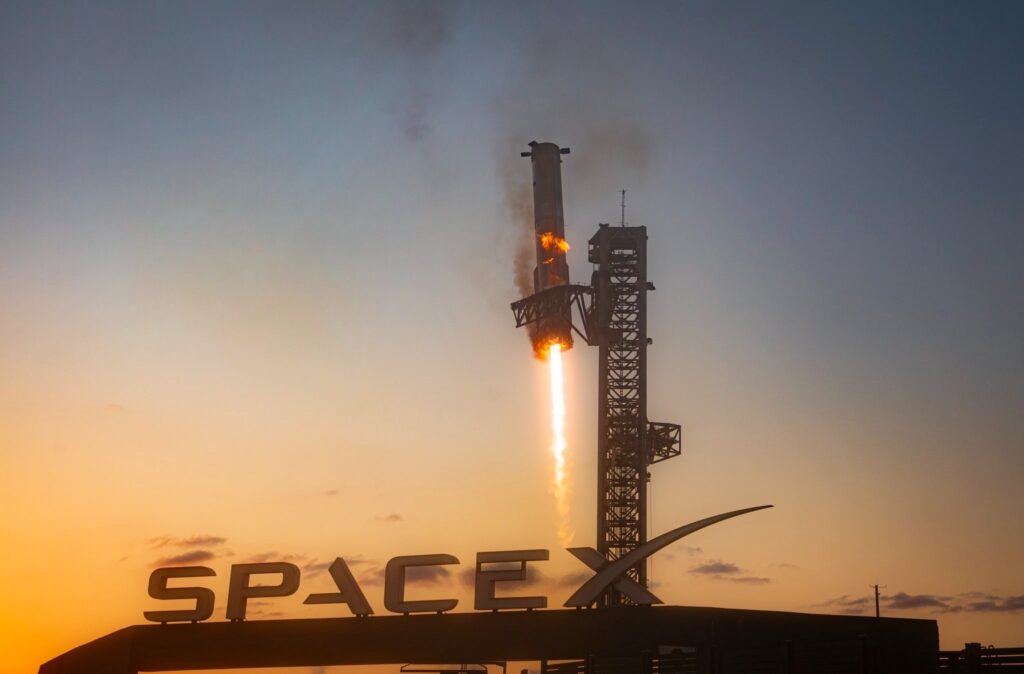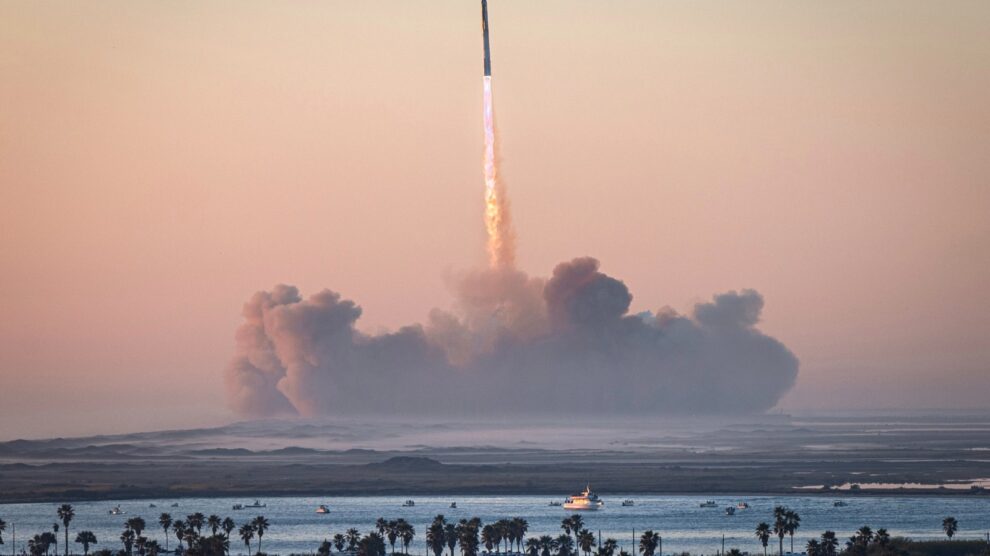
SpaceX’s Milestone Achievement
Key Aspects of the Test Flight
- Booster Return: Successful return of the Super Heavy booster to the launch site
- Catch Mechanism: First demonstration of the “catch” by mechanical arms on the launch tower
- Reusability Progress: Major step towards SpaceX’s vision of rapid reusability
- NASA HLS Implications: Positive indication for Starship’s role in the Human Landing System program
SpaceX’s Low Profile at IAC
Despite the significant achievement, SpaceX maintained a notably low profile at the conference:
- No booth in the exhibit hall
- Absence of major presentations
- Test flight success spoke louder than any formal presence
NASA’s Perspective
Administrator Bill Nelson’s Comments
“Just yesterday, SpaceX has a very successful fifth launch as they develop this very large rocket. This was another one of the steps in the iteration of developing that.”
Nelson’s statements highlighted several key points:
- Confirmation of Starship’s progress for the Artemis program
- On-schedule development for the HLS version of Starship
- Potential for Artemis 3 to maintain its late 2026 timeline
Industry Reactions
Positive Responses
Companies with plans to utilize Starship welcomed the news:
- Commercial space station developers see potential for large payload launches
- Lunar mission planners gain confidence in Starship’s capabilities
- General excitement about the expanded possibilities for space exploration and utilization
European Perspectives
The success prompted varied reactions from European entities:
Rocket Factory Augsburg
“Congratulations to SpaceX, what an incredible feat of engineering! Mars, here we come. At the same time, the coin has a second side: it shows and confirms that Europe has completely lost touch. Can it still catch up? No chance. At least not the way things are going at the moment.”
RFA’s statement called for:
- Government support as anchor customers for new launch vehicles
- Increased investment in the European space sector
- Regulatory framework promoting fast, risk-taking development
European Space Agency (ESA)
Josef Aschbacher, ESA’s Director General, offered a more measured response:
- Acknowledged the engineering achievement of SpaceX
- Recognized the need to reassess Europe’s position in the changing space ecosystem
- Emphasized Europe’s ongoing efforts to make its launch industry more competitive
- Highlighted the potential opportunities created by Starship’s capabilities
Global Impact on Launch Vehicle Development
Reusability as a Key Focus
The success of Starship and Falcon 9 has emphasized the importance of reusability:
- Growing consensus that reusability is essential for future launch vehicles
- Increased pressure on traditional expendable launch vehicle manufacturers
- Potential shift in launch economics and pricing models
International Responses
Other nations are adapting their space programs in light of SpaceX’s achievements:
India’s Next Generation Launch Vehicle (NGLV)
- Recently approved by the Indian government
- Aims for increased payload performance over existing rockets
- Plans for a reusable booster
- Estimated six-year development timeline
Implications for the Space Industry
Competitive Landscape
SpaceX’s advancements are reshaping the competitive dynamics of the launch industry:
- Widening capability gap between SpaceX and traditional launch providers
- Pressure on other companies and agencies to accelerate innovation
- Potential for industry consolidation or strategic partnerships
New Space Economy Opportunities
Starship’s capabilities could enable new markets and applications:
- Large-scale space manufacturing and assembly
- Enhanced capabilities for space tourism and private space stations
- Potential for more ambitious scientific missions and space exploration
Policy and Regulatory Considerations
The rapid advancement of private space capabilities raises new questions:
- Need for updated space traffic management systems
- Environmental concerns related to increased launch frequency
- International cooperation and competition in space exploration
Future Outlook
Near-Term Milestones
Key events to watch in the coming months and years:
- Further Starship test flights and potential orbital missions
- Progress on NASA’s Artemis program and the HLS version of Starship
- Responses from other launch providers and space agencies
Long-Term Implications
Potential long-term effects of Starship’s development:
- Shift in focus towards in-space capabilities and infrastructure
- Accelerated timeline for Mars exploration and potential colonization
- Evolution of international space policies and cooperation frameworks
Conclusion
The discussions and reactions at the 2024 International Astronautical Congress in Milan underscore the profound impact of SpaceX’s latest Starship test flight on the global space industry. While SpaceX itself maintained a low profile at the event, the success of their Starship/Super Heavy vehicle test dominated conversations and prompted varied responses from industry leaders, space agencies, and competitors.
NASA’s positive outlook on the test flight’s implications for the Artemis program highlights the growing reliance on commercial partnerships for ambitious space exploration goals. Meanwhile, the range of reactions from European entities, from calls for urgent action to measured assessments of new opportunities, reflects the complex challenges and potential transformations facing the global space industry.
As the space sector grapples with the realities of rapidly advancing private capabilities, particularly in launch systems, we can expect to see continued shifts in strategies, policies, and international collaborations. The success of Starship not only demonstrates SpaceX’s engineering prowess but also signals a potential paradigm shift in how we approach space access, exploration, and utilization.
Moving forward, the industry will be closely watching how other players respond to this latest development, whether through accelerated innovation, strategic partnerships, or policy changes. The coming years promise to be a transformative period for the space sector, with the potential for new markets, enhanced capabilities, and perhaps a reimagining of humanity’s role in space.










Add Comment